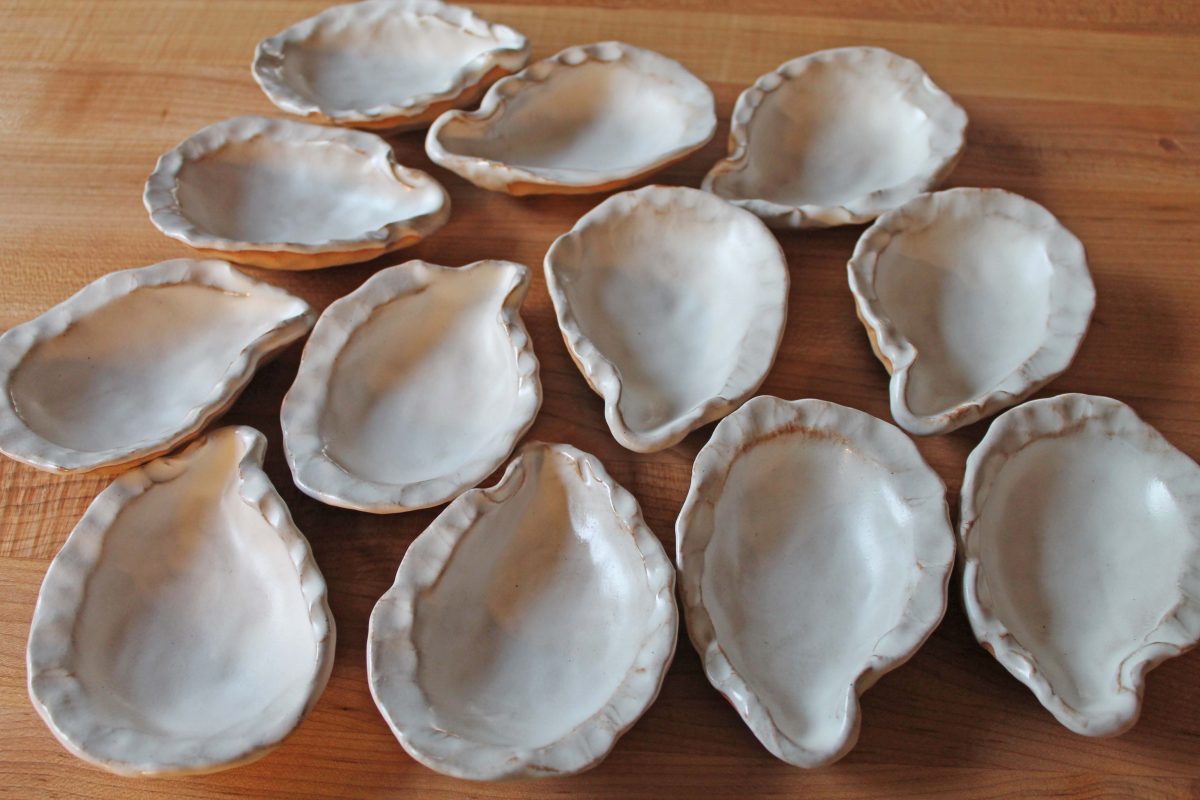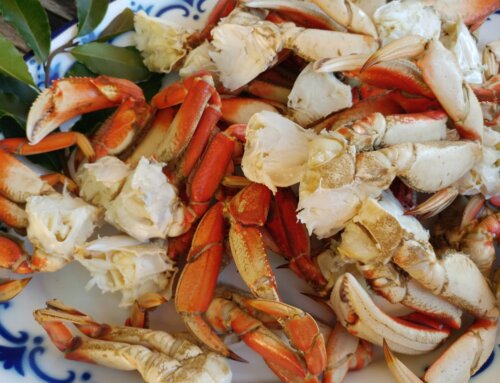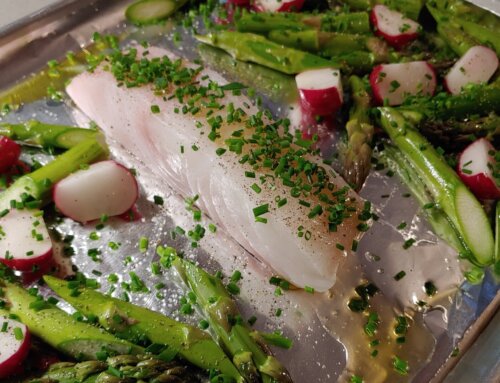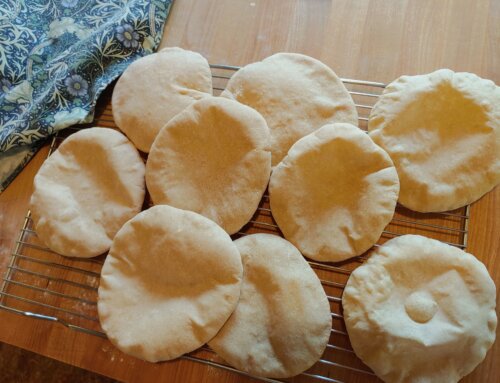It’s no surprise that I’ve been talking A LOT about oysters in the past few months, since the release of Oysters: Recipe that Bring Home a Taste of the Sea. And no, I haven’t gotten tired of the topic, I’m not sick of them yet!
In the course of interviews I’ve been doing and classes I’m teaching, a frequent question I get asked is about my favorite way to cook oysters. I love them many ways, of course; classic pan-fried and raw are up there on the list. But the top choice I share is usually grilled. It hardly gets simpler: heat source and oysters. They don’t event need to be shucked first, just a quick toss under cold water to rinse away any grit or debris. Set the shell cup-side down on the grate and let the heat do all the work. (It’s certainly an option to shuck the oysters before grilling, I go into a whole discussion of the pros and cons of each version in the book.)
But when you’re looking for an extra-quick step toward delicious oysters for dinner, have a look these stoneware oyster dishes from Loftin Oysters in Louisiana (use the code ‘monappetit’ to place an order and you’ll get 10% off!). 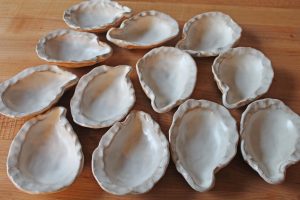 Rather than start with in-shell oysters, you can take advantage of hyper-convenient jarred oysters*–just plop one into each shell, add your favorite seasoning or sauce, and grill, bake or broil until plump and bubbly.
Rather than start with in-shell oysters, you can take advantage of hyper-convenient jarred oysters*–just plop one into each shell, add your favorite seasoning or sauce, and grill, bake or broil until plump and bubbly.
I met the Loftin Oysters folks at the Hangout Oyster Cookoff down in Gulf Shores, Alabama, last November, after which they very kindly send me a dozen to play around with. What I love is that these ceramic shells are not only practical (able to withstand high oven temps and direct flame on the grill) but lovely (each dish is hand molded and finished so they have unique character, definitely not cookie-cutter forms). And unlike most other oyster-cooking kitchenware I’ve seen, these individual dishes are more versatile and easy to use.
I gathered sorrel from my garden to make a simple sauce, spooned over some oysters for a test run in the oven. (And with grilling season getting underway, that version won’t be far behind.) Though the oyster’s own shell can be an ideal cooking vessel, it is quite wobbly thanks to its cupped bottom shell–which can mean the oyster’s natural liquor and any sauce added drip out of the shell during cooking. With these ceramic shells and their flat bottoms, that’s definitely not a concern. And they surely make a pretty presentation, seamlessly going from grill or oven to plate. Plus, there is of course no rule that you can’t cook other seafoods in here too: shrimp in a garlic-herb-butter sauce, decadent crab gratin, crawfish in a z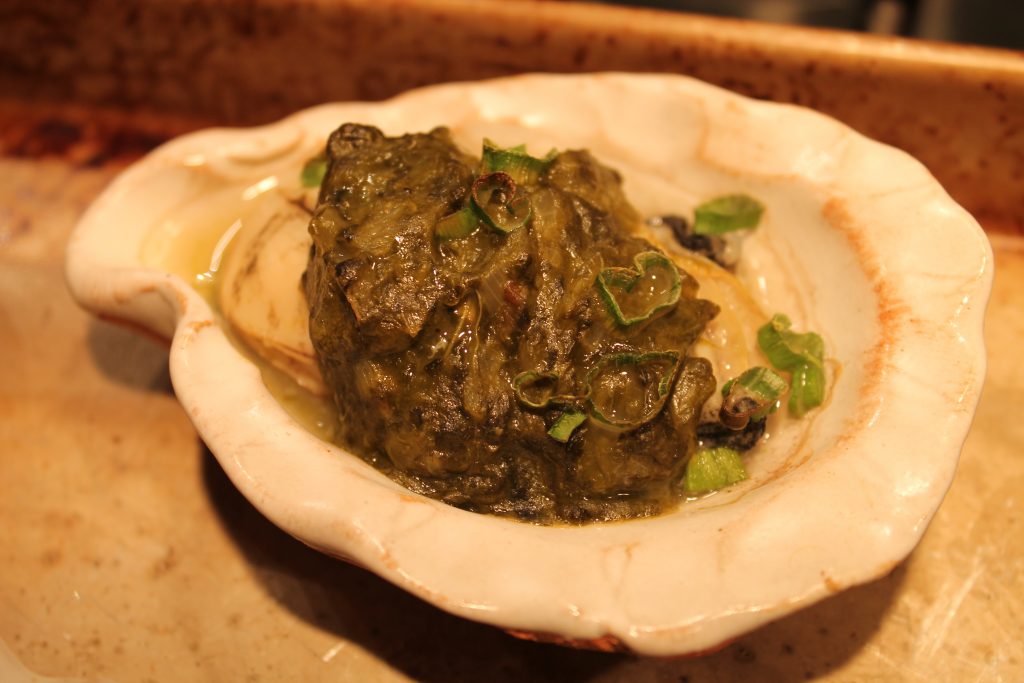 esty tomato sauce. Just let your creativity guide you!
esty tomato sauce. Just let your creativity guide you!
One of the greatest pleasures I got out of writing Oysters was the time playing around in the kitchen creating recipes for the book — exploring for my own interest just how versatile oysters can be. It’s one of the top lessons I hope most readers will take from the book, increasing the range of ways they can enjoy oysters. And hopefully encouraging them to enjoy those oysters more often! These beautiful shells can go far to make a quick-to-make oyster dinner a no-brainer any night of the week. With the bonus of having them on hand for an elegant course to serve at your next dinner party.
* A side note about jarred oysters. It’s been interesting the number of times that someone I’m chatting with at a class or event has the impression that jarred oysters are something of a compromise product. One you wouldn’t choose if the in-shell product was available. That’s really not the case. Though, of course, like all food it matters that you’re buying good product: check the date on the container, make sure it’s in good shape, no leaking. A good oyster from a jar is an ideal product for a great many recipes that have no need for the oysters’ shell (short of slurping raw: that should always be from a freshly-shucked oyster).
While visiting oyster farms doing research, I’ve seen the process a number of times. Loads of oysters are brought in from their beds, a team of master shuckers is on hand to get them out of their shells right away. Their speed and agility is something to behold, I tell you! I used the “sport” setting on my camera and still images are a blur. The oyster meats are rinsed to remove any grit or debris, packed into jars, and soon on their way to stores so we can have really delicious, no-shuck oysters for dinner.

